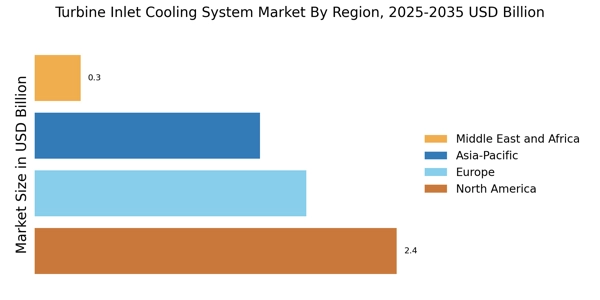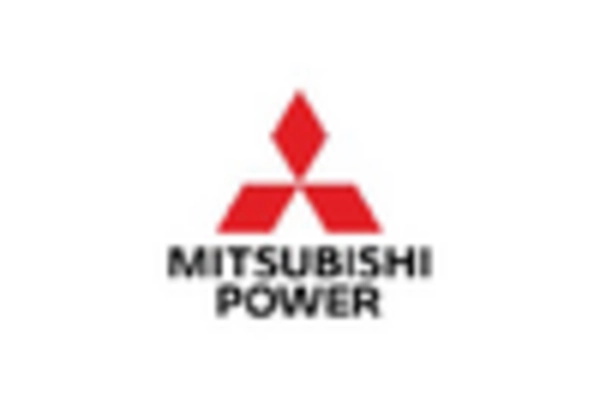Rising Need for Power Generation
The Turbine Inlet Cooling System Market is significantly influenced by the rising need for power generation across various sectors. With the global population increasing and urbanization accelerating, the demand for electricity is projected to rise substantially. This trend necessitates the deployment of advanced technologies, such as turbine inlet cooling systems, which enhance the output of gas turbines. Reports indicate that the global electricity demand could increase by over 25% by 2030, thereby creating a favorable environment for the growth of turbine inlet cooling systems. As power plants seek to optimize their operations, the adoption of these systems is likely to expand.
Growth of Renewable Energy Sources
The Turbine Inlet Cooling System Market is also influenced by the growth of renewable energy sources, which are increasingly integrated into the energy mix. As renewable energy technologies, such as wind and solar, become more prevalent, there is a corresponding need for efficient backup power solutions. Turbine inlet cooling systems can enhance the performance of gas turbines used in conjunction with renewable sources, ensuring reliability and efficiency. The transition towards a more sustainable energy landscape is likely to drive the adoption of these cooling systems, as they provide a means to optimize gas turbine performance in a hybrid energy environment.
Stringent Environmental Regulations
The Turbine Inlet Cooling System Market is being shaped by stringent environmental regulations aimed at reducing emissions from power generation. Governments worldwide are implementing policies that mandate lower greenhouse gas emissions, pushing power plants to adopt cleaner technologies. Turbine inlet cooling systems contribute to this goal by enhancing the efficiency of gas turbines, which in turn reduces fuel consumption and emissions. As regulatory frameworks become more rigorous, the adoption of turbine inlet cooling systems is likely to increase, as companies seek to comply with environmental standards while maintaining operational efficiency.
Increasing Demand for Energy Efficiency
The Turbine Inlet Cooling System Market is experiencing a notable surge in demand for energy-efficient solutions. As energy costs continue to rise, industries are increasingly seeking technologies that enhance the efficiency of power generation. Turbine inlet cooling systems play a crucial role in improving the performance of gas turbines, thereby reducing fuel consumption and operational costs. According to recent data, the implementation of these systems can lead to efficiency improvements of up to 10%. This growing emphasis on energy efficiency is likely to drive investments in turbine inlet cooling technologies, as companies strive to meet both economic and environmental goals.
Technological Innovations in Cooling Systems
The Turbine Inlet Cooling System Market is benefiting from ongoing technological innovations that enhance the performance and reliability of cooling systems. Recent advancements in materials and design have led to more efficient cooling solutions that can operate under extreme conditions. These innovations not only improve the efficiency of gas turbines but also extend their operational lifespan. The introduction of smart cooling technologies, which utilize data analytics for real-time performance monitoring, is also gaining traction. As industries increasingly prioritize reliability and efficiency, the demand for advanced turbine inlet cooling systems is expected to grow, further propelling market expansion.


















Leave a Comment